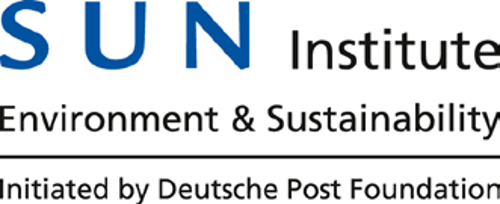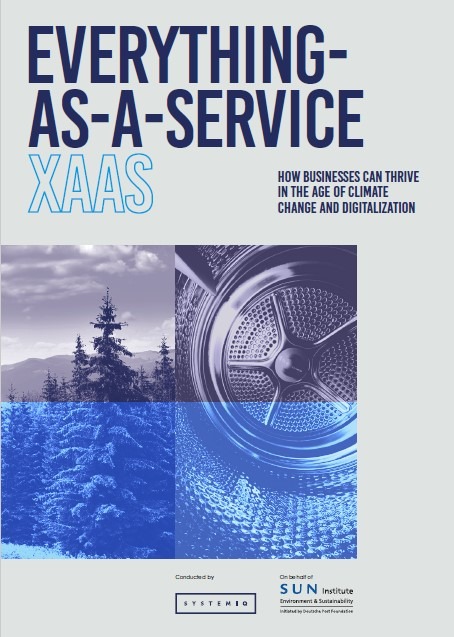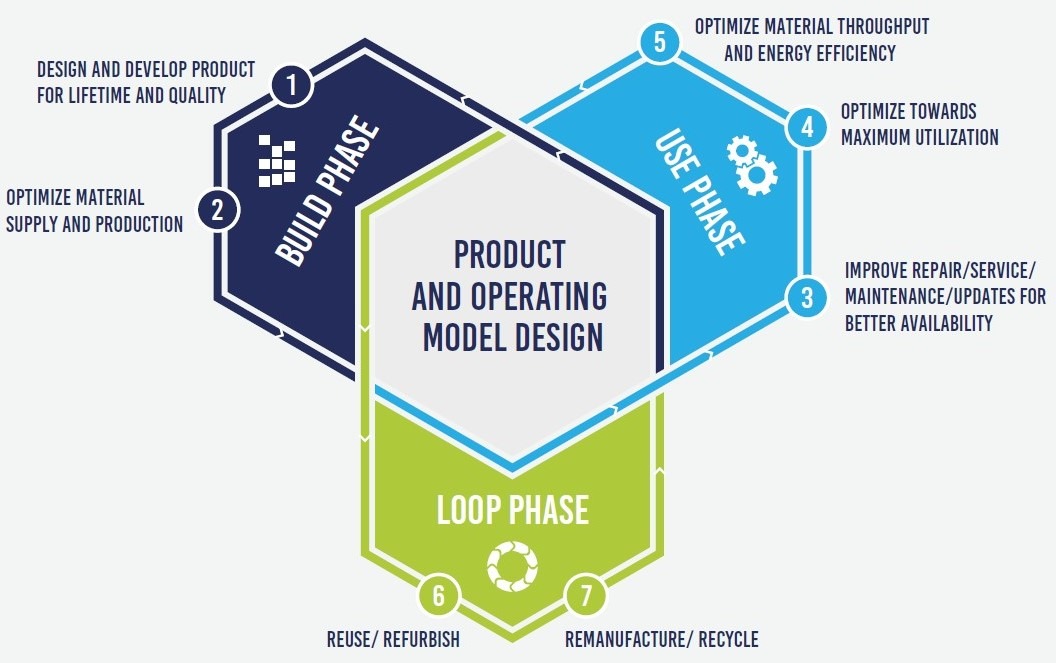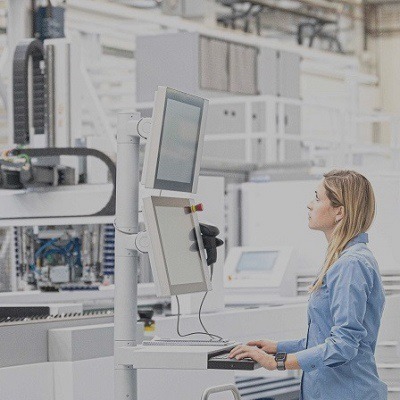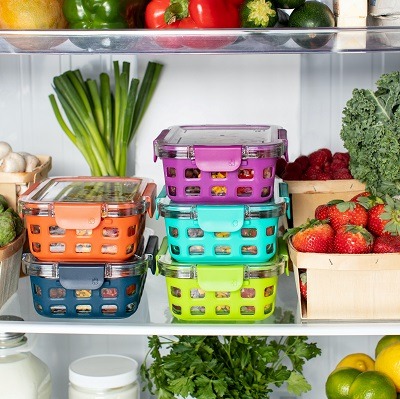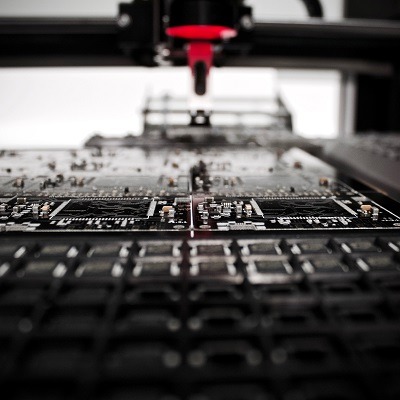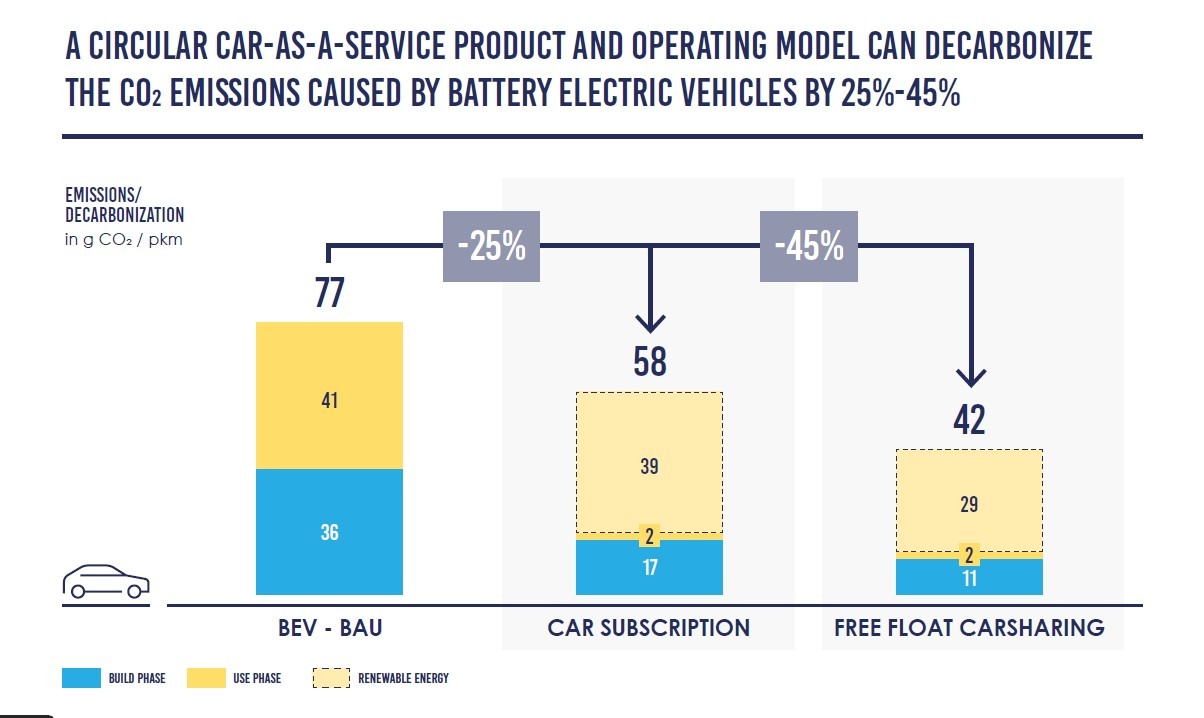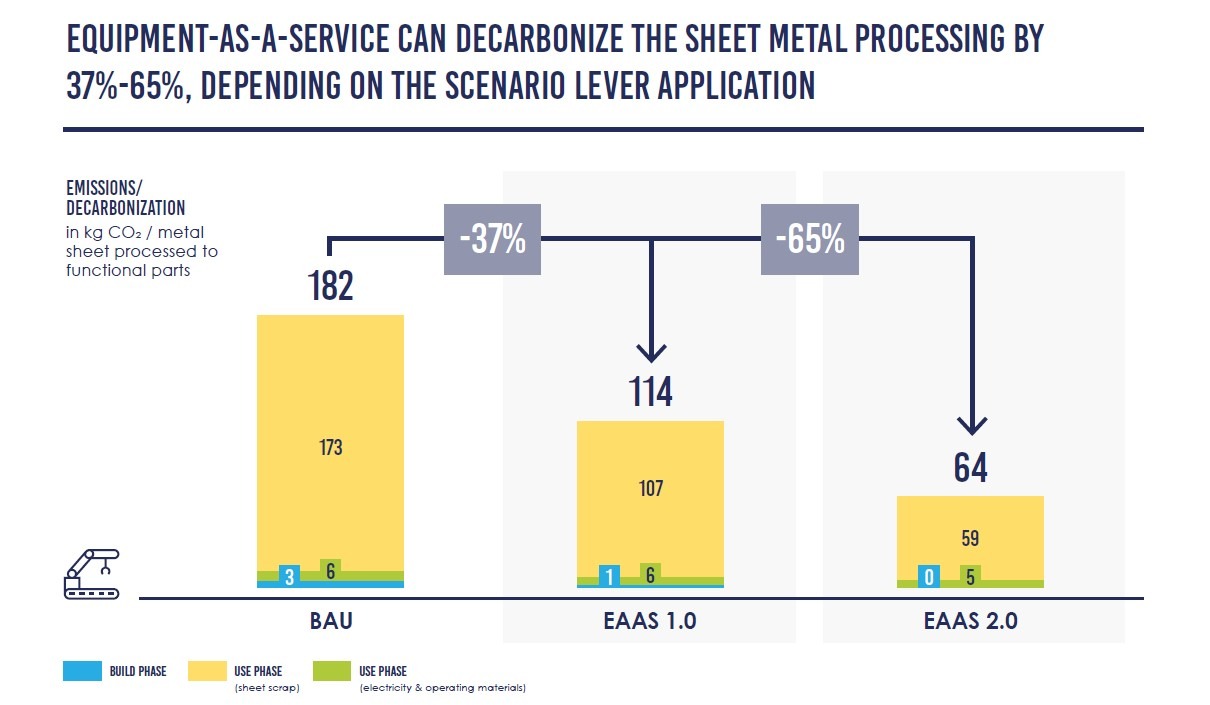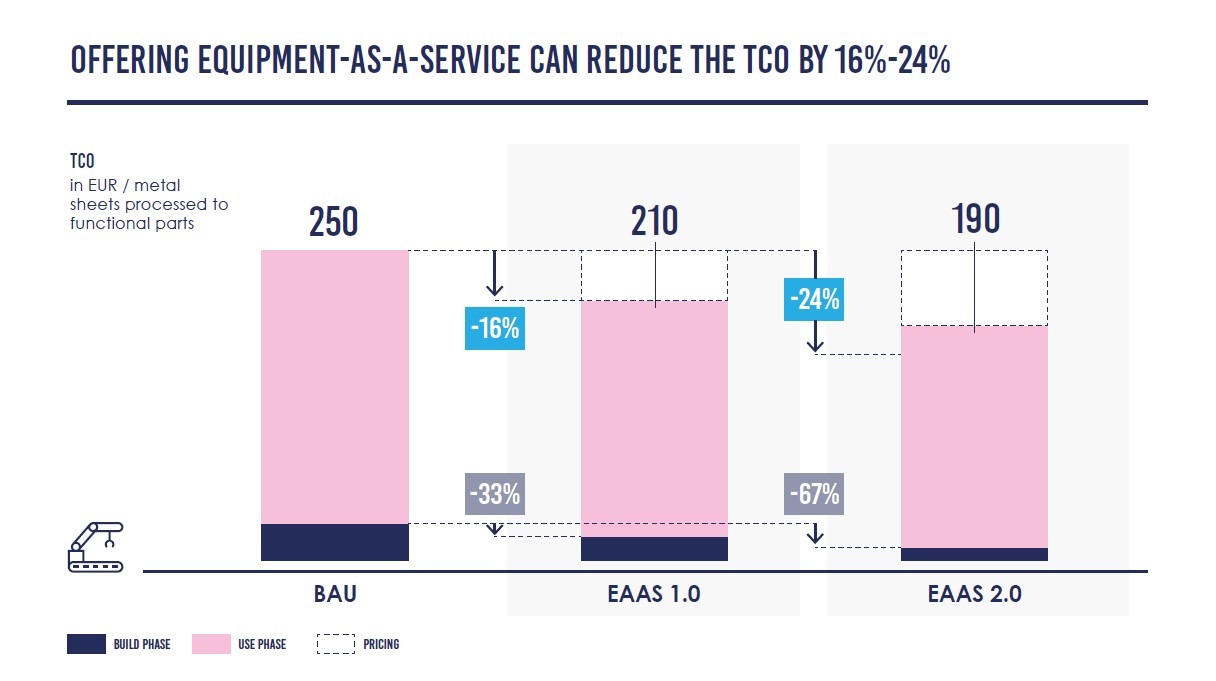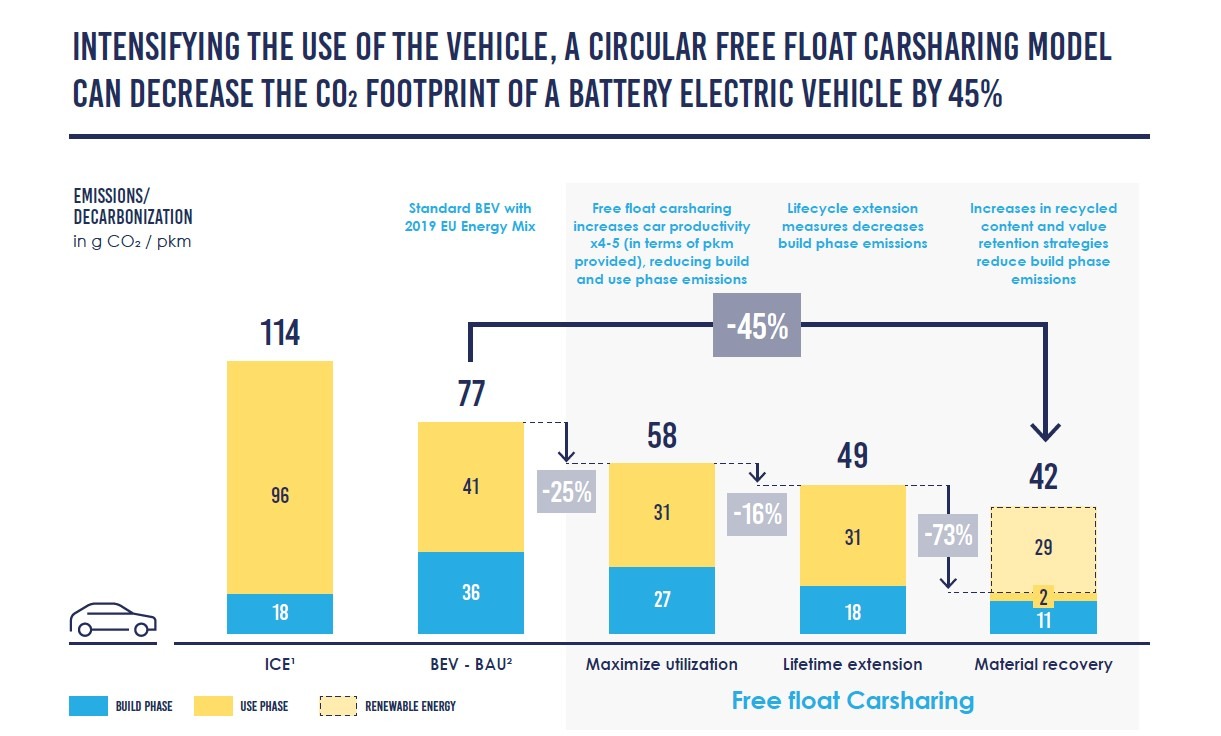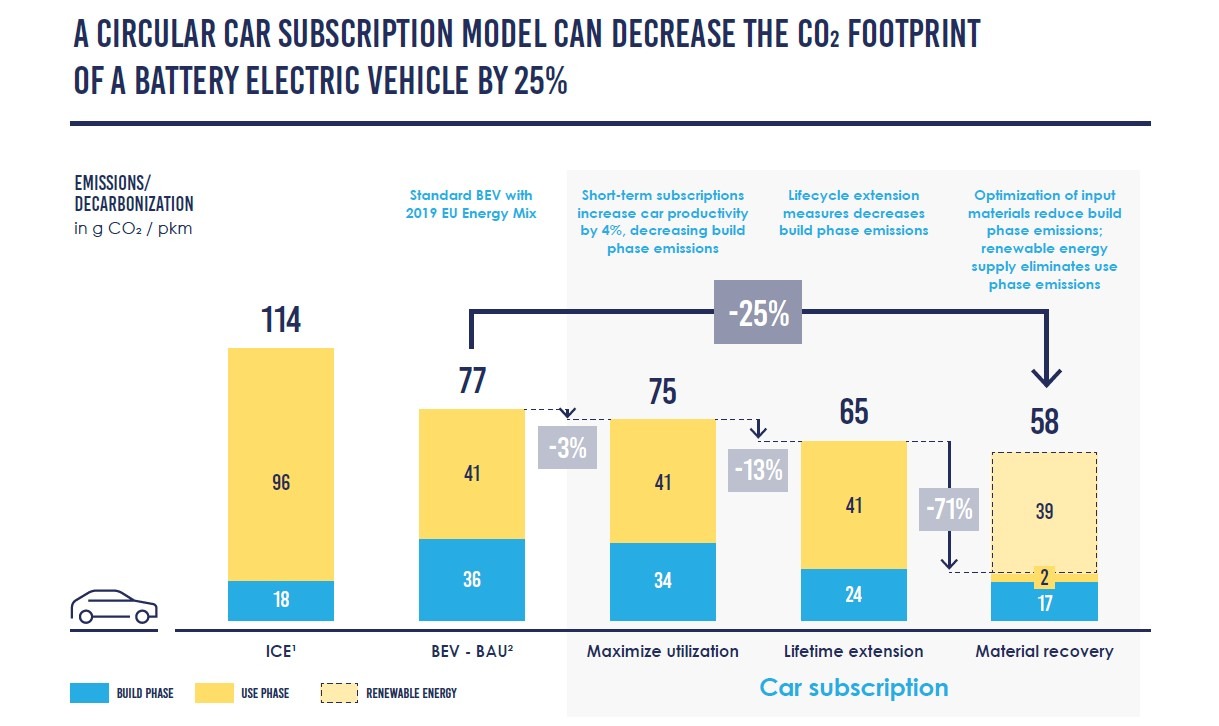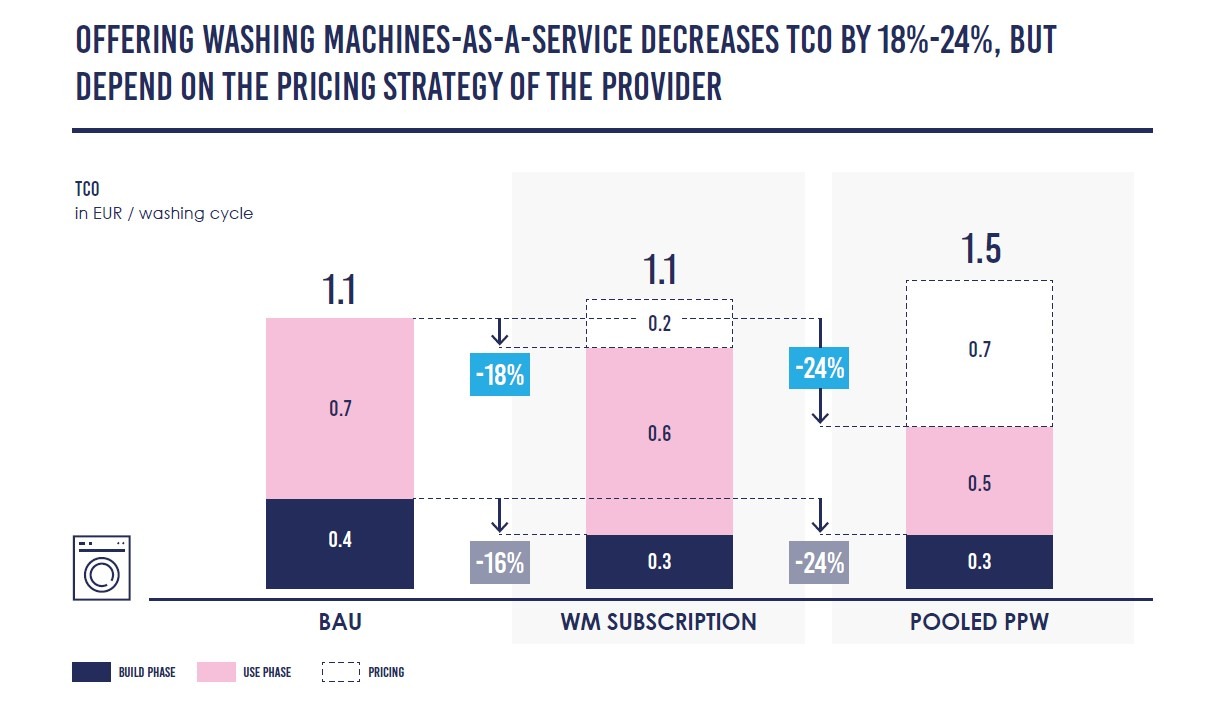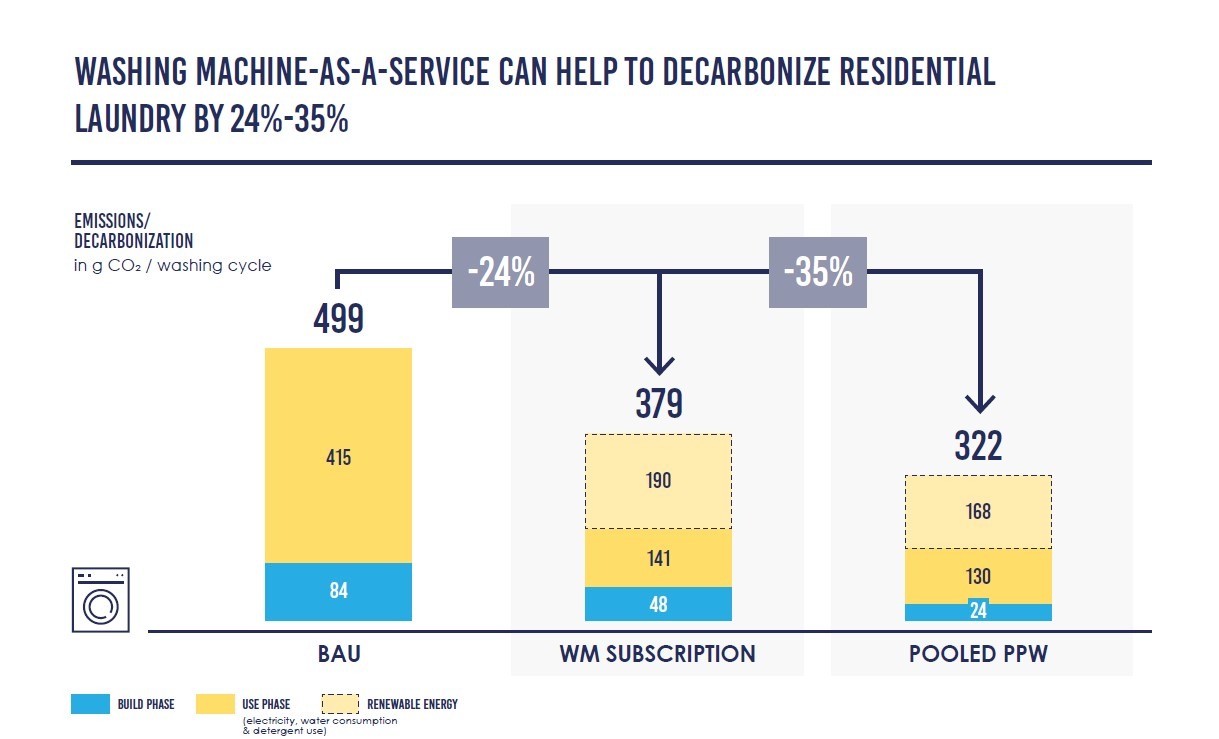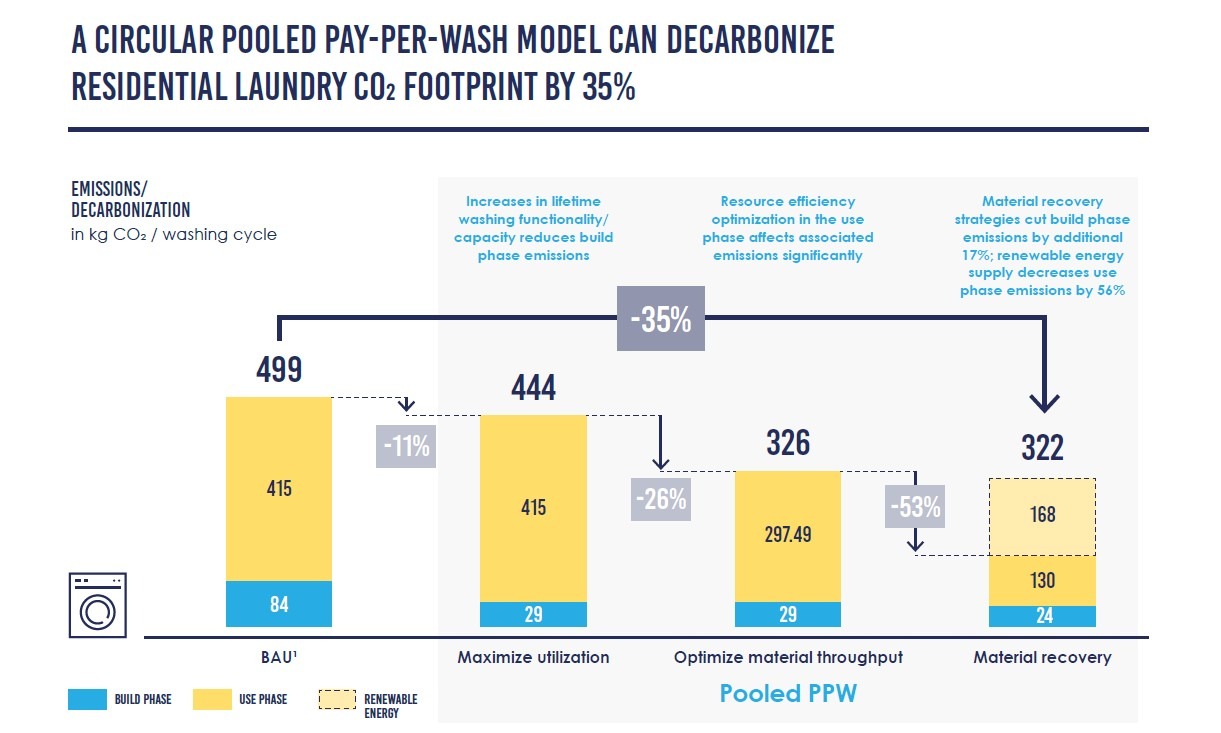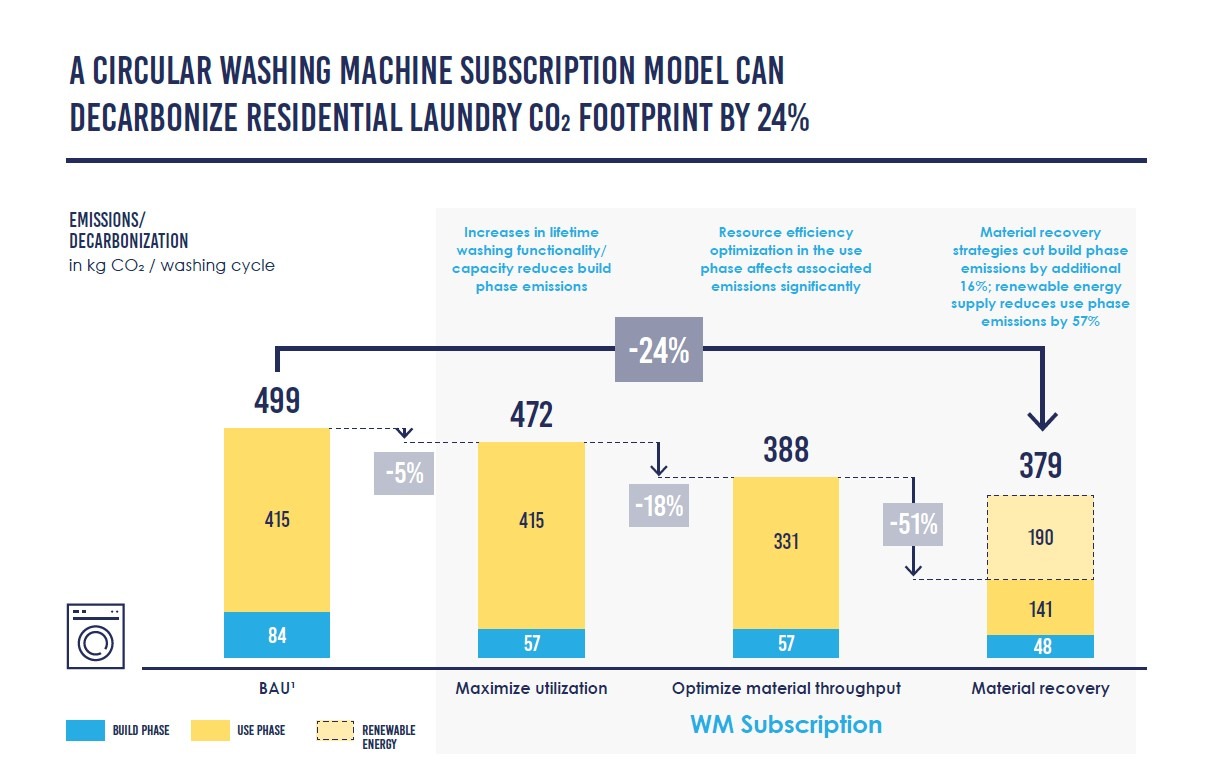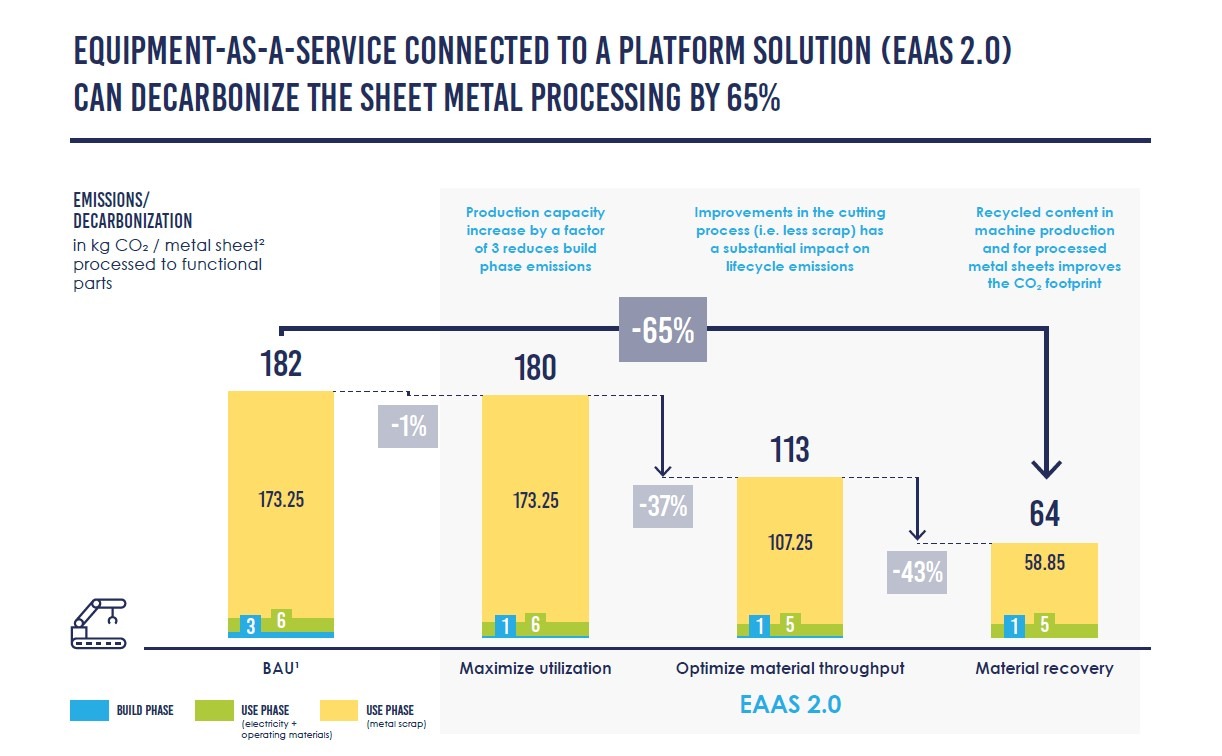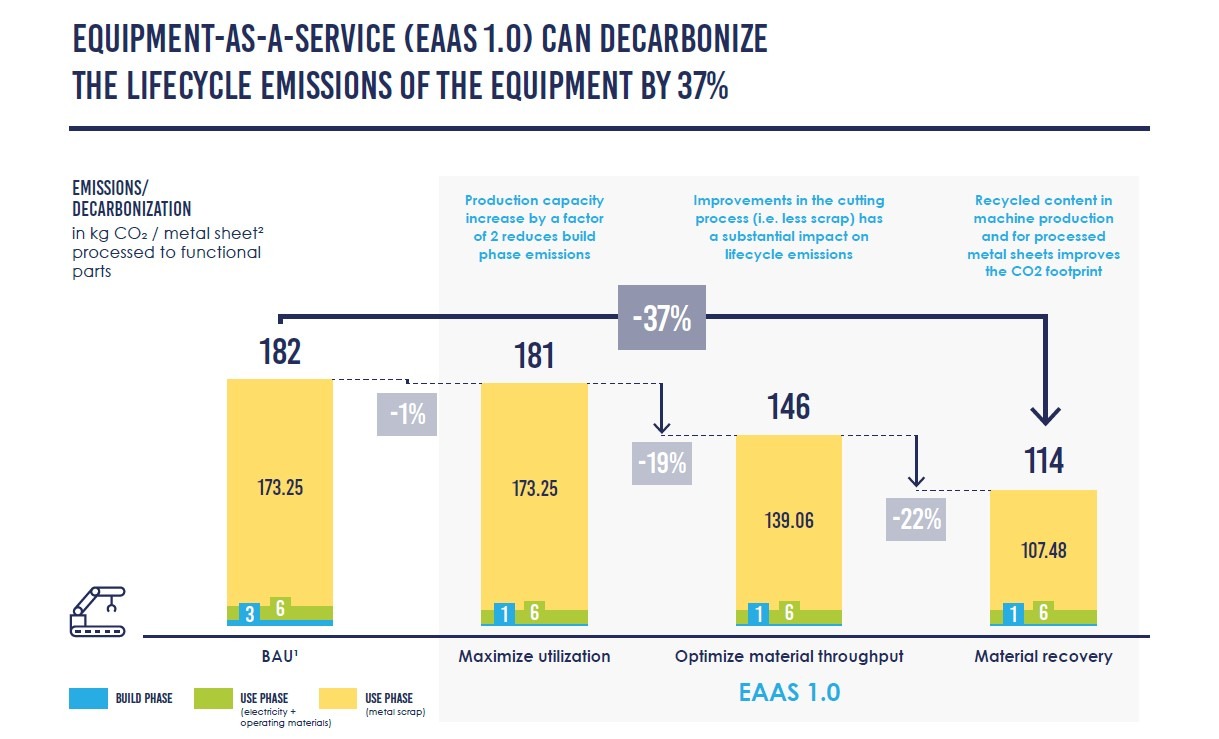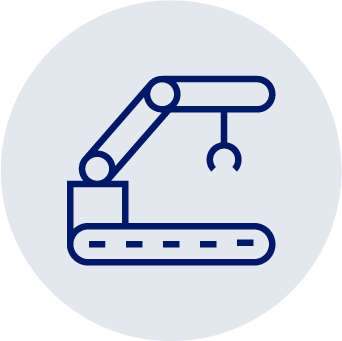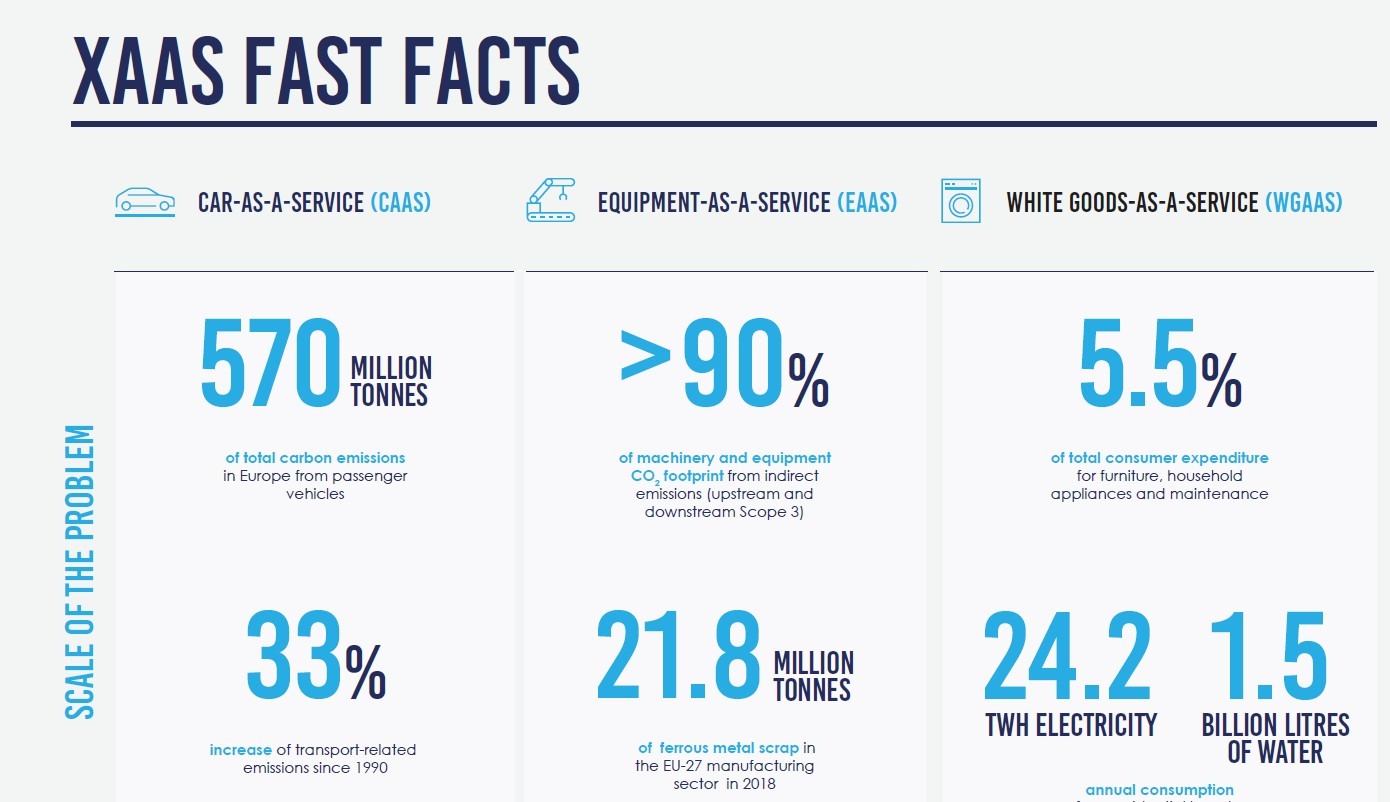“
"Business success tomorrow means creating value for environment, society, and business. This requires pioneering research and development, but also new business models that can essentially decouple CO2 emissions from business growth. Scaling XaaS systems that embrace circular economy principles will be important for generating sustainable growth – and calls for a collaborative and focussed effort across industries."
Saori DubourgMember of the Executive Board, BASF
“
To reverse the climate and biodiversity crises and build a climate neutral economy by 2050, we must accelerate the decoupling of our economic growth from emissions and resource use. A simple replacement of fossil-based with bio-based will not be enough. We need innovative circular business models that are increasingly service-oriented and drastically reduce our dependency on primary resource extraction.
The Everything-as-a-Service report provides powerful and much-needed evidence on how such models work, and offers clear guidance to have them succeed on the ground. This report is therefore an important contribution to one of the key priorities of the European Green Deal and its Circular Economy Action Plan.
Frans TimmermansExecutive Vice-President of the European Commission
“
Sustainability is an integrative part of our corporate strategy. Implementing measures inspired by the circular economy makes an important contribution – ranging from product design for sustainability to circular and service-based business models. We all need to seize the opportunity to accelerate the transition towards more resource-productive and sustainable industrial systems.
Carla KriwetChief Executive Officer, BSH Home Appliances Group
“
“Waste and disposability are woven into today’s economy, fueling climate change and limiting opportunities for long-term economic prosperity. Everything as a Service shows how – as part of a circular economy – we can change that, and harness the power of design and innovation to deliver better outcomes for businesses, their customers, and the environment.”
Dame Ellen MacArthurFounder & Chair of Trustees - Ellen MacArthur Foundation
“
"Germany has set ambitious climate targets. To achieve climate neutrality by 2045, increasing the use of renewable energies is not enough. We need to manage our natural resources differently. For industrial nations, the transition towards a circular economy is an attractive opportunity to drive prosperity within ecological boundaries. As this report shows, demand-side innovations are both a critical and an attractive way to drive the transition: Germany can sell services, outcomes or results in the same successful way in which we have sold products in the past. The report describes a vision in which XaaS can grow into an essential driver of Germany’s innovation, competitiveness and employment in Europe and beyond.”
Elisabeth Winkelmeier-BeckerParliamentary State Secretary in the Federal Ministry for Economic Affairs and Energy
“
"Moving to a Circular Economy will require fundamental change, such as a shift to Producer Ownership, where producers take ownership and responsibility for their product over the full lifecycle. This could generate incentives for new XaaS business models to gain a competitive edge through the design of products for durability, dematerialisation, re-use and high-value recycling."
Paul EkinsProfessor of Resources and Environmental Policy, UCL Institute for Sustainable Resources
“
“Services that unlock value by helping us to better utilise, circulate and improve products and materials are critically enabling first layers of the circular economy. They represent exciting ways in which innovators and designers can begin their journey and apply society's well developed skills in service design.”
Tim BrownExecutive Chair, IDEO, and Vice Chair, kyu Collective
“
“As markets tumbled early 2020, many of us expected that the pandemic would slow global action on climate change, but the opposite happened. The pandemic forced society as a whole to remember the fragility of our planet. The 2021 XaaS Everything-as-a-Service report splendidly raises the importance of climate risks and outlines holistic strategies as we face issues relating to climate change. For us as an investment firm, climate risks are investment risks and we therefore see sustainable circular economy strategies, that aim to reduce carbon emissions, as becoming increasingly important.”
Mirjam Staub-BisangCountry Manager Switzerland and member of the ExCo EMEA, BlackRock, Senior Advisor BlackRock Sustainable Investing
“
“Equipment-as-a-Service offers industrial companies entirely new and disruptive business and production opportunities. By essentially focusing on performance, flexibility and convenience, this allows customers to focus and grow. Beyond that, EaaS is the path to a business model based on Circular Economy principles. As this report outlines, implementing such models at scale will require collective action within and across industries.”
Peter LeibingerChief Technology Officer and Vice Chairman of the Group Management Board, TRUMPF


